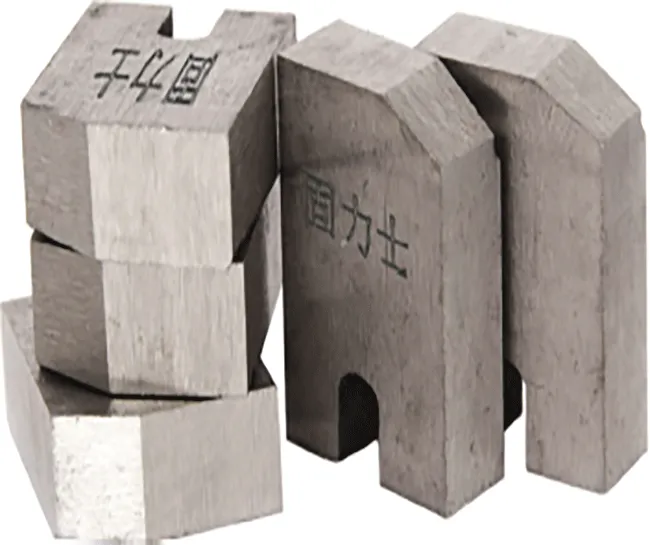Products Description
Rib peeling blades for rolling machines are core cutting components used in conjunction with rolling machines in the metal processing field, primarily applied in the pre-thread processing of cylindrical workpieces such as steel bars and bolts. Their key function is to precisely remove the protruding ribs (e.g., transverse and longitudinal ribs of ribbed steel bars) from the surface of the workpiece end before thread rolling, forming a smooth, regular cylindrical surface in the area to be processed. This provides a fundamental guarantee for the forming accuracy, dimensional consistency, and connection strength of threads in subsequent rolling operations.
In terms of structural design, rib peeling blades typically adopt a split or integral structure. Based on the diameter specifications of the workpiece and the distribution of ribs, the blade edge is designed with a specific arc or multi-segment cutting angle. This ensures that during high-speed rotating peeling, the ribs can be efficiently cut off without excessive damage to the workpiece base material or the formation of burrs. Some high-precision blades also use coating technologies (such as titanium nitride coating) to enhance edge wear resistance and high-temperature resistance, extending their service life.
For material selection, rib peeling blades are mostly made of high-hardness alloy tool steel (e.g., Cr12MoV) or high-speed steel (e.g., W18Cr4V). For processing high-strength steel bars, some blades use cemented carbide to withstand the cutting load from high-hardness workpieces. The heat treatment process of the blades is also crucial: through quenching and tempering, the blade hardness can reach HRC58-62 while maintaining sufficient toughness to prevent edge chipping during cutting.
In practical applications, the installation accuracy of rib peeling blades directly affects processing quality. Blades must be precisely aligned with the rolling machine’s spindle via the tool holder to ensure concentricity during cutting. Additionally, cutting speed (usually 300-800 rpm) and feed rate need to be adjusted according to the workpiece material and rib hardness to balance processing efficiency and blade wear. In daily use, regular inspections of blade edge wear are necessary, with timely replacement or regrinding to avoid issues like rough workpiece surfaces or dimensional deviations caused by dull edges.
As the construction and machinery manufacturing industries demand higher precision in threaded connections, the performance of rib peeling blades continues to evolve. Innovations include using CNC grinding to improve edge precision and developing universal blades adaptable to multiple workpiece specifications, catering to diverse processing needs.



